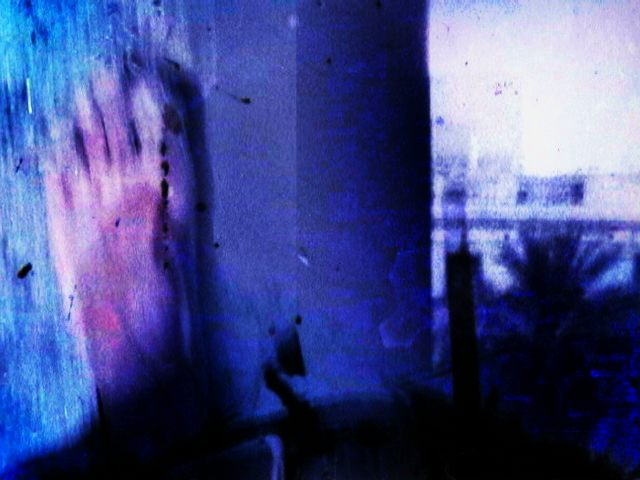Is there any landscape more perfect, more recognizable, more mysterious, than a face? I’ve been asked to say a few words about “landscapes of resistance” and the first look that comes to mind is Janaya (J) Khan, co-founder of Black Lives Matter here in Toronto. They have a serious look here, but whenever standing before a scrum, lighting us up with the poetry of race analytics, with the deets of names and when and who and how many, they manage to convert all that deep thinking into the joy of communion. Speaking as if there were no end to language. Being the change. They are already my mayor, making this city a safer spot despite the gravity of carding.
Mediascape is my landscape. This is a frame grab from my pal Jorge Lozano’s movie Watch My Back. It shows a quartet of speakers from the Jane-Finch corridor testifying to lives outside the code, do I even need to add that they weren’t born here, that English is not their first language, that they are intimate with police, jails, surveillance, gang violence? Here are some of the lives rarely glimpsed in corporate media, except when it’s too late, and almost never in the work of artists.
This landscape refuses the face, because, as this speaker so eloquently notes, if I showed you my face, you would judge me. So I’m turning my back to you, I’m keeping my identity to myself. The act of witness can also be a way of carrying out a threat. The Spanish subtitle que se escapa means: that escapes. What if identity is founded on the act of escape, of slipping away from the certainties, the bad blood, the prison house of language and past experience? Or the judgement of white viewers? A capitalized text appears throughout the work in short, staccato phrasings offering testimonies of migration from Nicaragua or Colombia, a corrosive and systemic racism in Canada, and filled with predictable violence and poverty. The transcribed testimonies turn biography into poetry.
I just have to take the next step. The old boddhisatva question: How can I help you? How can I help you take the next step? Get out of bed in the morning. Lift the deadening depression, those terrible nights that never end, the computer vacuum of time.
I need to be here, right here, on the bottom of my foot. I want to feel the impression of the heel, and then the way the rest of foot falls, oh yes, I am always falling, until the toe pads offer me a soft landing, and the tips touch the ground. This ground, the ground of this moment, is all I am. I’m not walking to get somewhere, I’ve arrived.
The best art show of the year arrives once again courtesy of Barbara Fischer. It’s by Kent Monkman of course, who else would have the she-balls to cast themselves as Miss Chief, shaman-artist-conscience appearing again and again in this necessary historical rewrite (repaint?). The epic exhibition is entitled Shame and Prejudice: A Story of Resilience. Everything in the show announces: I’m going to take this personally, as if it’s happening in my body, as if it’s changed me. I need to let these old hurts wound me, so I can begin the work of healing, and I’ve grown so large that I can share all that too.
Let’s turn the old Hudson Bay blankets into rainbow flags and recline naked, well OK, except for the excellent heels. The fathers of Confederation are all here, copped from Robert Harris’s well known painting showing the besuited ones at the Charlottetown constitutional meetings of 1864, dedicated to erasing the first peoples, their august congregation repurposed as a life drawing class, with the artist as model.
Kent Monkman (program notes from the show): “I shine brightly for these souls through the darkness, slaying savage masculine force with the dazzling power of my beauty and allure. I am the light, the two-spirited gentle man and fierce woman. Walk towards me, my children, fall into step and let the drum guide you. You will be reborn, free to rise again with the buffalo.”


